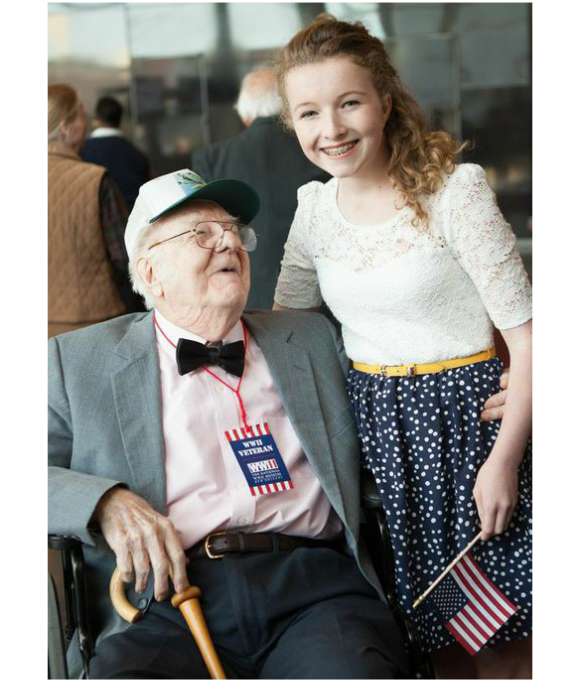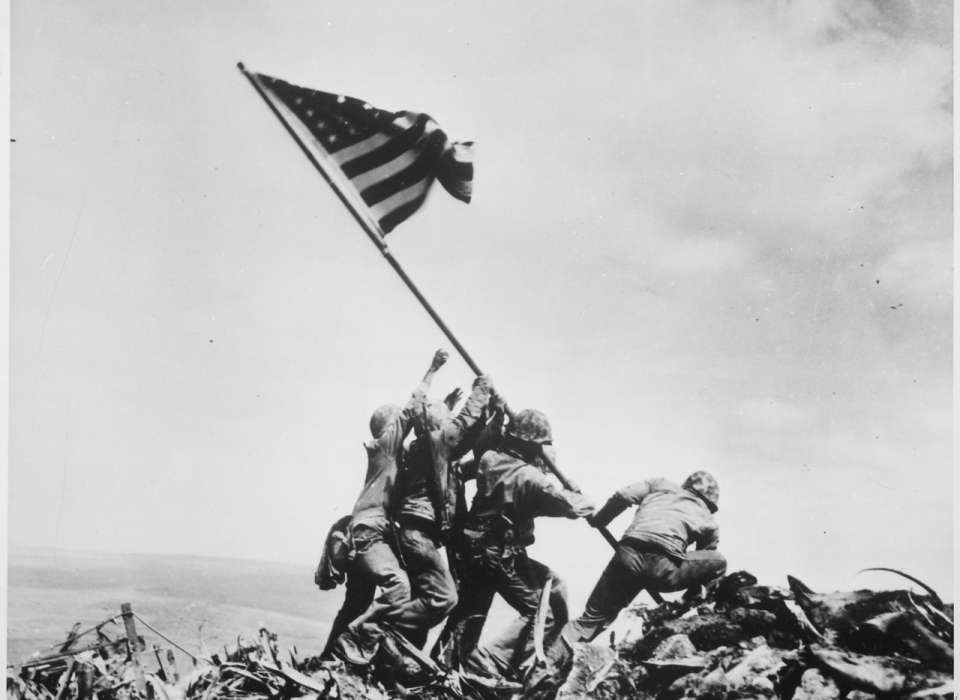This February marks the 75th anniversary of the battle for Iwo Jima, a fight whose brutality not only established it as a marker for the extraordinary courage and sacrifice of the US Marine Corps, but in 1945 also signified the staggering and escalating violence which American forces faced as they closed in on mainland Japan.
The spirit of the Marines was immortalized four days after the initial landings. On February 23, 1945 atop of Mount Suribachi on the southern end of the island photographer Joe Rosenthal captured the image of six Marines, raising an unfurling American flag. The image appeared in the American Sunday newspaper editions two days later on February 25, 1945; in today’s terminology, it immediately went viral. An artist’s rendering appeared on millions of posters for the seventh war bond drive in May 1945, the US Postal service released an official postage stamp bearing the image in July 1945, and Rosenthal won the Pulitzer Prize for photography later that year.
But the ultimate triumph implied in Rosenthal’s image would take a full month of brutal combat against a fanatical enemy to achieve. The island of Iwo Jima was part of the Tokyo prefecture before the war, and the Japanese fought tenaciously against the first American penetration of their home soil. Their strategy was to force such vicious bloodshed that the Americans might be deterred from invading the Japanese home islands.
The Americans secured victory on Iwo Jima on March 26, 1945, after both sides had paid a devastating toll in lives. Out of an estimated 20,000 Japanese troops on the island, only slightly over 200 survived the battle. American forces suffered over 26,000 casualties, including 6,821 dead, in savage close-quarters fighting with flamethrowers and grenades amongst tunnels, caves and bunkers. The stark courage displayed on Iwo Jima led Admiral Chester Nimitz to famously reflect that “Uncommon valor was a common virtue” before the battle was even over. In the end, 27 U.S. Marines and sailors received the Medal of Honor for actions during the battle; over half (14 total) were posthumously awarded. Three of the flag raisers in Rosenthal’s photograph—Sergeant Michael Strank, Corporal Harlon Block, and Private First Class Franklin Sousley—were killed in action.
The legacy of the battle on Iwo Jima remains strong in American memory and culture right up until today. Navy Petty officer Felix de Weldon produced a sculpture of the six flag-raisers within three days after seeing the released Rosenthal photograph in 1945. He eventually was commissioned to produce the same image for the United States Marine Corps War Memorial. Completed in 1954, it sits at the entrance to Arlington National Cemetery today.
Even in 1945, controversies erupted over Rosenthal’s iconic photograph. Those familiar with the battle of Iwo Jima know that there was not one, but two flag raisings on Mount Suribachi. Rosenthal photographed the second event as it happened, but he also took a posed photograph after the instantaneous, and subsequently iconic, image. When asked if he had staged the photograph, Rosenthal mistakenly thought the question referred to the posed image. His affirmative reply added to confusion about the image’s authenticity for decades to come.
Controversies over the personal identities of the six flag-raisers have also spanned the following years. In June 2016, and again in October 2019, the Marine Corps made public announcements based upon research conducted by amateur historians correcting the identities of men in the iconic Rosenthal photograph. Now the Marine Corps' history will reflect the identities of the six flag raisers as: Corporal Harlon Block, Private First Class Rene Gagnon, Private First Class Ira Hayes, Private First Class Harold Schultz, Private First Class Franklin Sousley, and Sergeant Michael Strank.
The National WWII Museum’s upcoming conference Memory Wars: World War II at 75, will take place September 10-12, 2020. Top historians and scholars will examine how the legacies, memories, and the means of memorializing World War II have evolved, 75 years after the end of the war that changed the world. For more information, email memory@nationalww2museum.org.

Become a Member
This article was originally written for V-Mail, the Museum's quarterly newsletter to our Members. Subscriptions are just one perk, explore our Member benefits.
Keith Huxen
Keith is the former Senior Director of Research and History in the Institute for the Study of War and Democracy at The National WWII Museum.
Cite this article:
MLA Citation:
APA Citation:
Chicago Style Citation:







![Max Fuchs, New York City cantor, sings as Rabbi Sydney [sic] Lefkowitz, Richmond, VA, conducts the first Jewish services from Germany.](/sites/default/files/styles/max_650x650/public/2025-10/image1.jpg)

